Morgaine Faye Now a Registered Trademark
I'm proud to share that Morgaine Faye® is now an officially registered trademark with the United States Patent and Trademark Office!








Sign up to be the first to know about sales, new arrivals and special events.
My Cart
Your Cart Is Empty
Continue shopping
